Welcome to Goleta! With its diverse habitats, Goleta is home to a vast array of birds. Whether you’re a beginner or an experienced birder, Goleta offers something for everyone. From the coast to the mountains, you can find a variety of birds, from seabirds to raptors.
Whether you’re exploring the local wetlands or hiking in the foothills, you’re sure to spot some of the more than 150 species of birds that have been recorded in Goleta. Keep your eyes peeled for Peregrine Falcons, Red-tailed Hawks, and Black Phoebes.
You might even catch a glimpse of some of the endangered species that call Goleta home, such as the California Gnatcatcher or Western Snowy Plover. So grab your binoculars and head out to explore Goleta’s avian residents!
1. Turkey Vulture
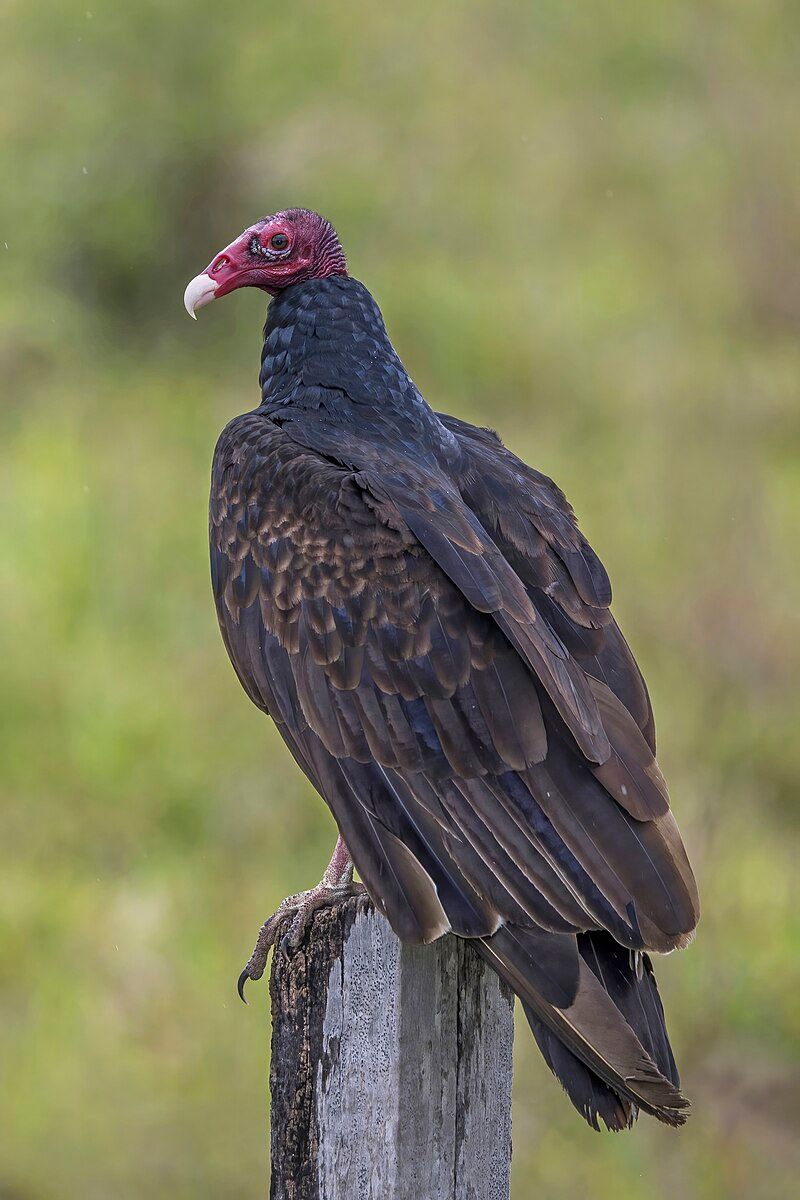
The Turkey Vulture is an impressive bird, found throughout the Americas. It is the most widespread of the New World vultures, covering an immense range that stretches from the southernmost tip of South America to the northern reaches of Canada.
It is one of three species of vultures in the genus Cathartes, a family of vultures known as the Cathartidae. These birds play an important role in their ecosystems, as they help to keep the environment clean by feeding on carrion and other decaying matter.
The Turkey Vulture is a large bird, with a wingspan of up to five feet. It has a bald head and a reddish-brown body, with a white beak and a featherless neck.
Its long wings allow it to soar over great distances, and its excellent eyesight enables it to spot food sources from high in the sky. The Turkey Vulture is a vital part of its environment, and its conservation is important for the health of the ecosystem.
| Kingdom | Animalia |
| Phylum | Chordata |
| Class | Aves |
| Order | Accipitriformes |
| Family | Cathartidae |
| Genus | Cathartes |
| Species | C. aura |
2. Long-Billed Curlew
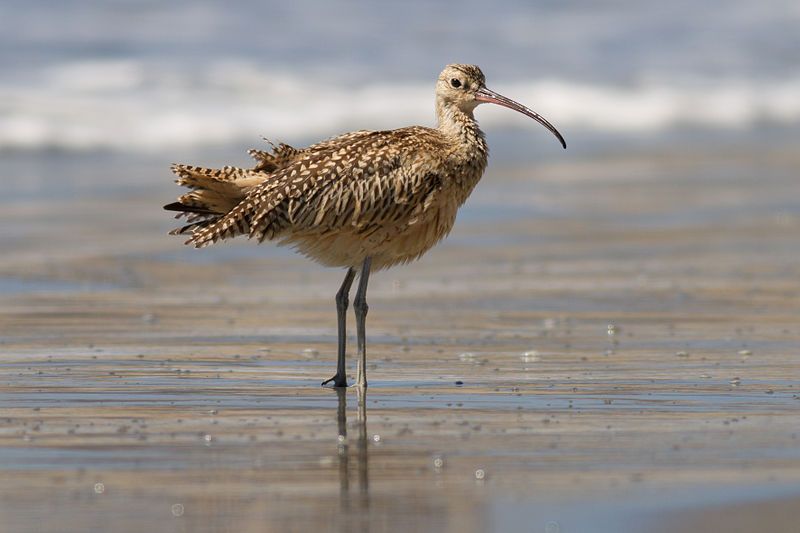
The long-billed curlew is a species of shorebird found in North America. It is a member of the family Scolopacidae, and has been known by a variety of other names such as “sickle-bird” and “candlestick bird”.
This species breeds in the central and western parts of North America and is known to migrate southward and to the coast during the winter months.
The long-billed curlew is a large species of shorebird, with a long bill, and is usually seen foraging in shallow waters, or on mudflats. Its diet is comprised mainly of small invertebrates, such as worms and mollusks, which it finds by probing in the mud.
It is a solitary species, and usually nests on the ground. The long-billed curlew is an important species in its ecosystem, and its presence or absence can be an indicator of the overall health of the environment.
| Kingdom | Animalia |
| Phylum | Chordata |
| Class | Aves |
| Order | Charadriiformes |
| Family | Scolopacidae |
| Genus | Numenius |
| Species | N. americanus |
3. Great Blue Heron
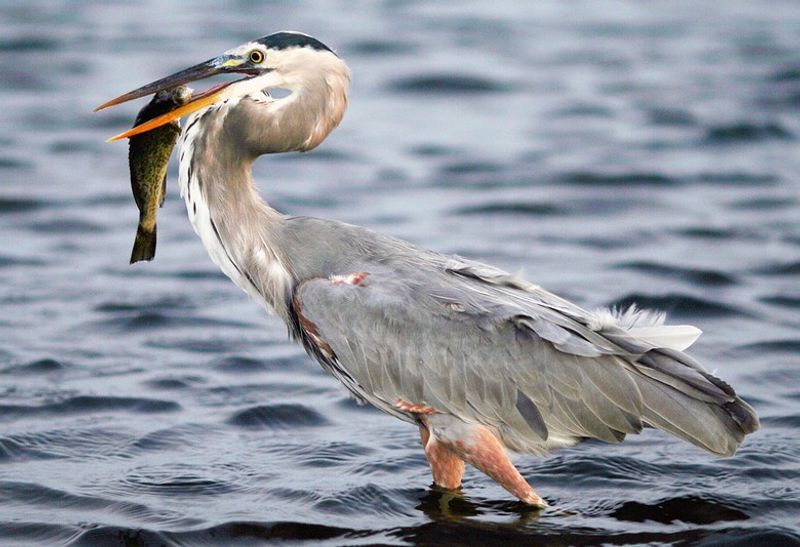
The great blue heron is a majestic bird that can be found in many parts of the Americas. It belongs to the heron family Ardeidae, making it a relative of other heron species such as the egret and night heron.
This species is quite large and is often seen wading in shallow waters or wetlands. The great blue heron is found in many places throughout North and Central America, as well as parts of northwestern South America, the Caribbean, and the Galápagos Islands.
This wide range of distribution is due in part to the bird’s adaptability and ability to survive in various types of habitats. The great blue heron is often seen near the shores of open water, such as rivers, lakes, and ponds.
It is also able to survive in wetlands, where it can find food and shelter. The great blue heron is a beautiful bird, with its blue-grey feathers and long neck. It is a popular sight in many parts of the Americas, with its presence being a reminder of the beauty of nature.
| Kingdom | Animalia |
| Phylum | Chordata |
| Class | Aves |
| Order | Pelecaniformes |
| Family | Ardeidae |
| Genus | Ardea |
| Species | A. herodias |
4. Brown Pelican
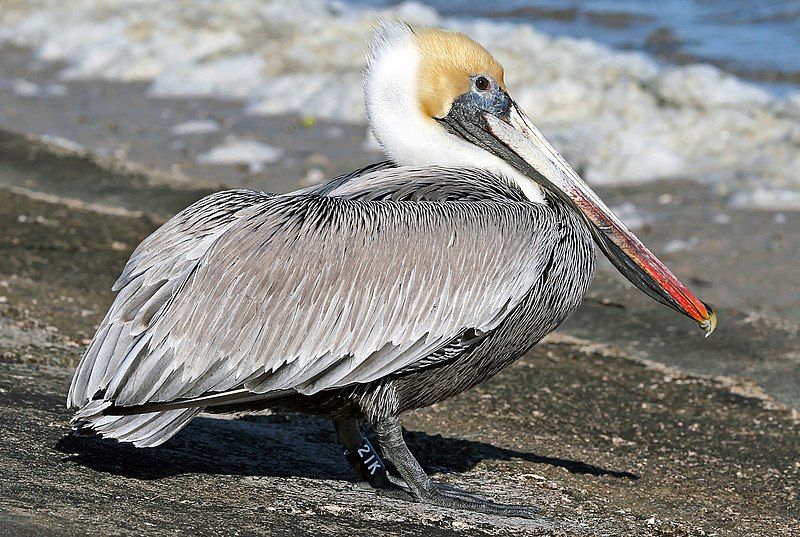
The brown pelican is a seabird belonging to the Pelecanidae family. This species can be found in the Americas and is one of two species of pelicans that feed by diving into the water. It is a medium-sized bird with a wingspan of up to seven and a half feet.
The wings have white lining along the trailing edge and the tail is white with a black tip. The bill is long and yellow with a pouch and is used to scoop up fish. Its head and neck are white, while the back, wings, and tail are brown.
They have grayish-brown legs and feet. The brown pelican is a coastal bird, usually found near bays, estuaries, and beaches. It feeds primarily on fish, but may also eat crustaceans, molluscs, and occasionally other birds.
The brown pelican has an interesting feeding strategy; it dives from heights of up to sixty feet into the water with its bill open, scooping up prey in its pouch.
Once the prey is caught, the pelican will shake its head to remove any excess water before swallowing. The brown pelican is a social bird and often feeds in large flocks. It nests in colonies on the ground, in trees, or on the tops of buildings.
Brown pelicans are considered to be a species of least concern by the International Union for Conservation of Nature, as their population is stable.
| Kingdom | Animalia |
| Phylum | Chordata |
| Class | Aves |
| Order | Pelecaniformes |
| Family | Pelecanidae |
| Genus | Pelecanus |
| Species | P. occidentalis |
5. Snowy Egret
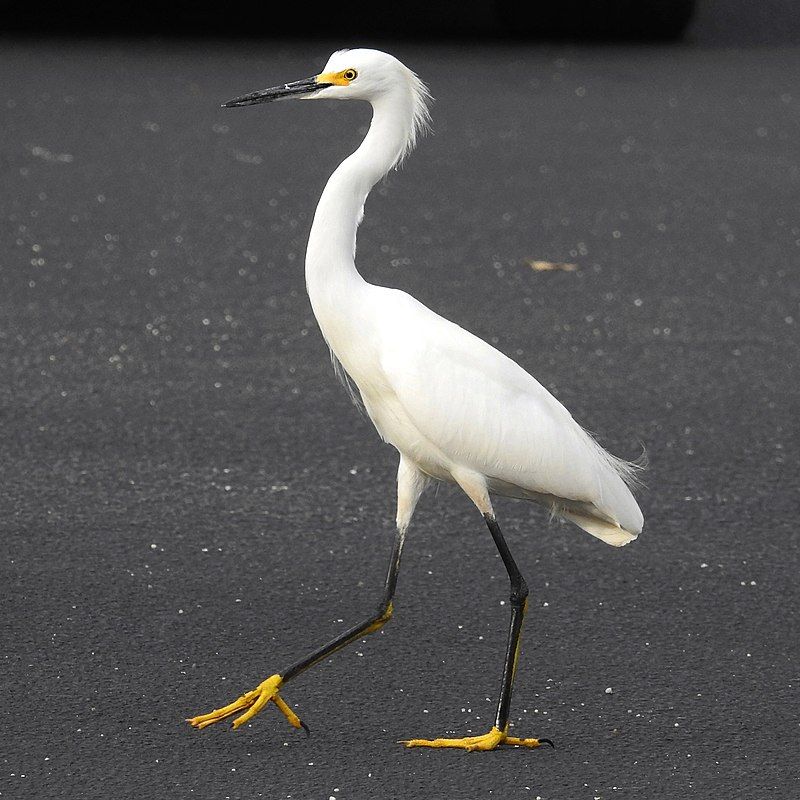
The snowy egret is a small white heron that is part of the Ardeidae family. Its genus name is derived from Provençal French, where ‘aigrette’ is a diminutive of ‘aigron’, which translates to ‘heron’.
This species was given the name ‘thula’ in error by Chilean naturalist Juan Ignacio Molina in 1782. In the Araucano language, ‘thula’ is the term for the black-necked swan. This shows how even experienced naturalists can make mistakes, as the snowy egret is not a swan at all.
The snowy egret is a beautiful creature that can often be found near bodies of water. It stands out from its heron relatives due to its pure white feathers and bright yellow feet.
In some areas, the snowy egret is considered an invasive species, as it competes with local heron species for food and nesting sites.
| Kingdom | Animalia |
| Phylum | Chordata |
| Class | Aves |
| Order | Pelecaniformes |
| Family | Ardeidae |
| Genus | Egretta |
| Species | E. thula |
6. Acorn Woodpecker
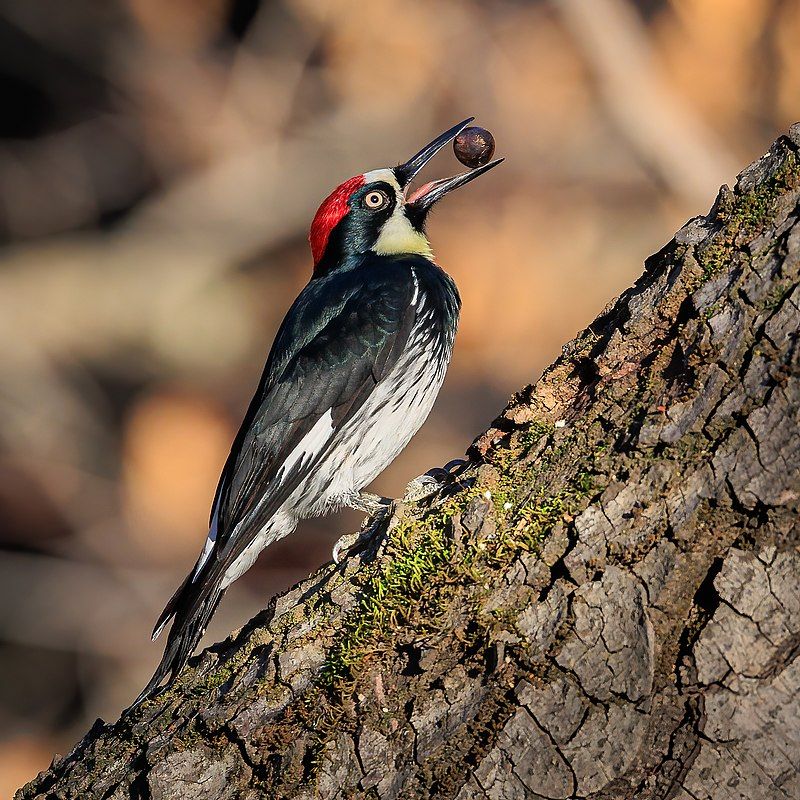
The acorn woodpecker is a species of bird belonging to the woodpecker family, Picidae. It is a medium-sized bird that is usually found in the western United States, Mexico, and Central America.
It is highly adapted to life in oak forests, where it makes its home. The acorn woodpecker is 21 cm in length and has an average weight of 85 g. It has black and white plumage and a white stripe running from its beak to its back.
It also has a red crown, which is unique among woodpeckers. Its bill is long and strong, which helps it to excavate its nest in the bark of trees. The acorn woodpecker is omnivorous, and its diet consists of insects, nuts, fruits, and sap.
It uses its bill to hammer bark and extract insects, which it then stores in its nest. It also collects and stores acorns in small holes in trees, earning it the name “acorn woodpecker”.
The acorns are an important food source during the winter months. The acorn woodpecker is a social species and often lives in groups. It is known for its loud call, which is often heard in oak forests.
The acorn woodpecker is an important species for the oak forests in which it lives, as it helps to disperse seeds and create new habitats for other species.
| Kingdom | Animalia |
| Phylum | Chordata |
| Class | Aves |
| Order | Piciformes |
| Family | Picidae |
| Genus | Melanerpes |
| Species | M. formicivorus |
7. Snowy Plover
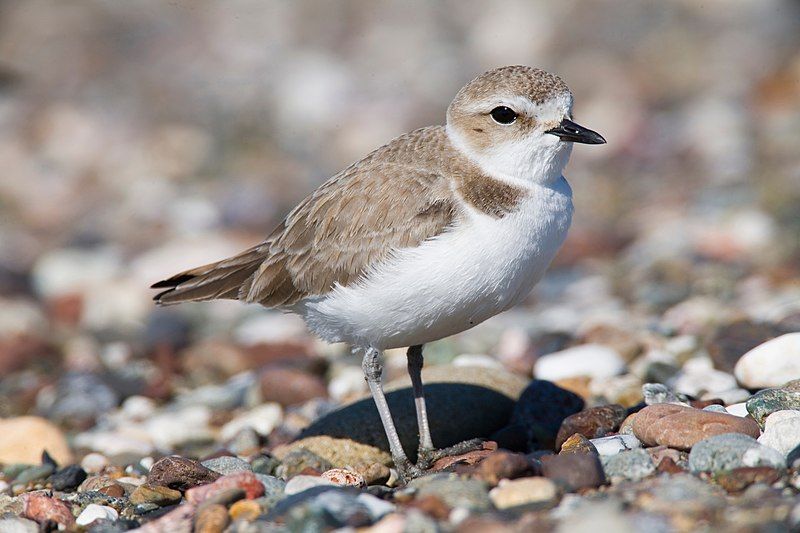
The snowy plover is a small wader bird from the plover family, which typically grows to be around 5-7 inches in length. It is found in various parts of the world, including the southern and western United States, the Caribbean, Ecuador, Peru, and Chile.
The snowy plover was initially considered to be a subspecies of the Kentish plover. However, recent studies have shown that it is actually a distinct species and is not related to the Kentish plover.
The snowy plover is easily identified by its white-grey feathers and black markings on its wings. It has a slender body and a short, thin beak. The snowy plover is a highly active bird, often running and hopping in search of food.
It primarily feeds on insects, such as beetles and grasshoppers, as well as other small invertebrates. The snowy plover is a ground-nesting bird, typically laying its eggs in shallow depressions on sandy beaches. The nest is often hidden among vegetation, rocks, and shells.
The female typically lays two to three eggs, which are incubated for around 25 days.
Both parents share the responsibility of caring for the chicks, which are able to fly within a few weeks of hatching. The snowy plover is an important species in many parts of the world and is listed as near threatened by the IUCN Red List.
Human activities, such as habitat destruction and beach development, have caused a significant decline in the snowy plover population. In response to this, conservation efforts are being made to protect the species and its habitats.
| Kingdom | Animalia |
| Phylum | Chordata |
| Class | Aves |
| Order | Charadriiformes |
| Family | Charadriidae |
| Genus | Charadrius |
| Species | C. nivosus |
8. Western Gull
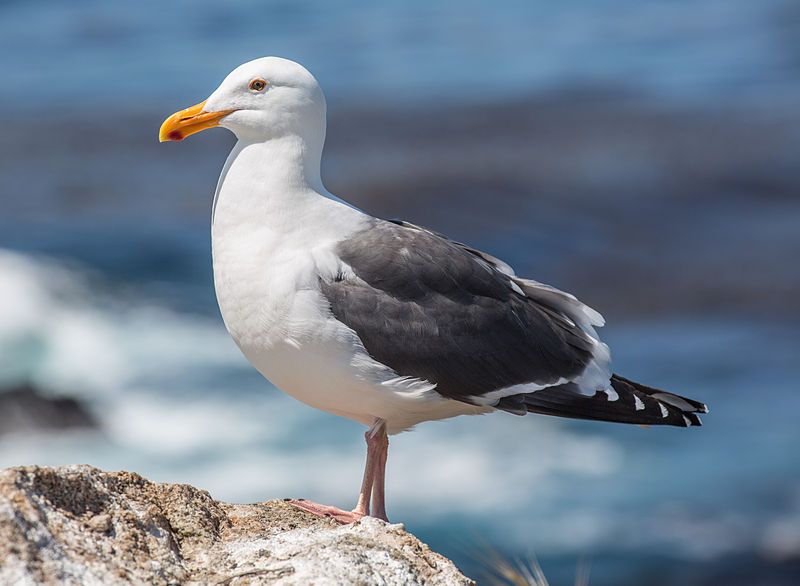
The western gull is a species of white-headed gull that inhabits the western coast of North America and the Pacific Ocean. Its range extends from British Columbia, Canada, to Baja California, Mexico.
It is a large gull, with a wingspan of around 1.5 meters. Prior to recent research, the western gull was thought to be the same species as the yellow-footed gull, which inhabits the Gulf of California.
However, recent research has revealed that the western gull is actually a distinct species, with differences in plumage, habitat, and behavior. It is now classified as a separate species.
The western gull is an important species in its range, serving as an important part of the food web. It is also a popular subject of birdwatching, with its large size and striking white head making it a recognizable species.
Overall, the western gull is an important species in its range, and its recent classification as a distinct species further highlights its importance.
Its presence on the west coast of North America and the Pacific Ocean is important for the local ecology, and it should be conserved for future generations.
| Kingdom | Animalia |
| Phylum | Chordata |
| Class | Aves |
| Order | Charadriiformes |
| Family | Laridae |
| Genus | Larus |
| Species | L. occidentalis |
9. California Quail
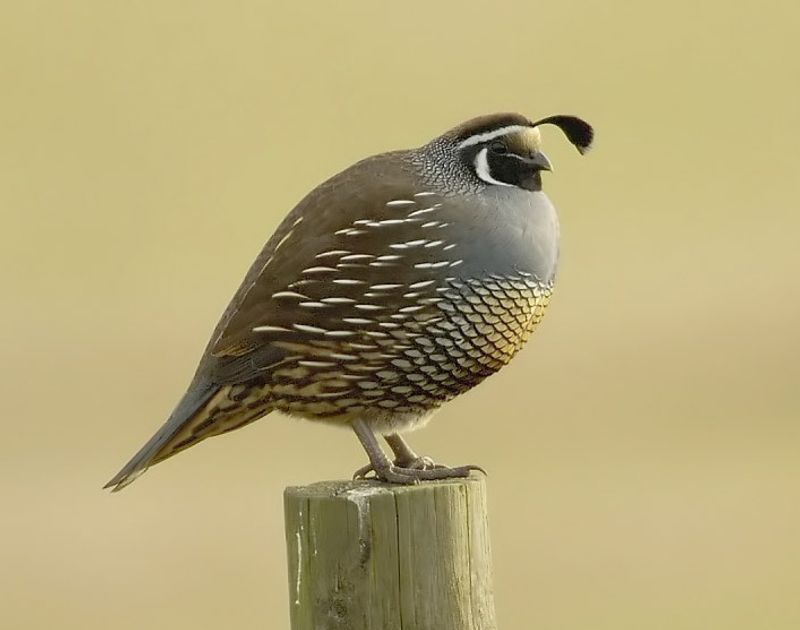
The California quail, also known as the California Valley quail or Valley quail, is a species of bird that lives in the New World quail family. It is a ground-dwelling bird, meaning it lives and breeds on the ground rather than in trees or bushes.
These birds have a distinctive feature that sets them apart from other quail – a curving crest or plume made of six feathers. This crest droops forward, and in male birds, it is black while in females, it is brown. The flanks of the bird are brown with white streaks.
This makes it easy to identify the species from a distance. The California quail is a popular game bird, and it is also popular among birdwatchers due to its beauty and distinctive features.
| Kingdom | Animalia |
| Phylum | Chordata |
| Class | Aves |
| Order | Galliformes |
| Family | Odontophoridae |
| Genus | Callipepla |
| Species | C. californica |
10. Great Egret
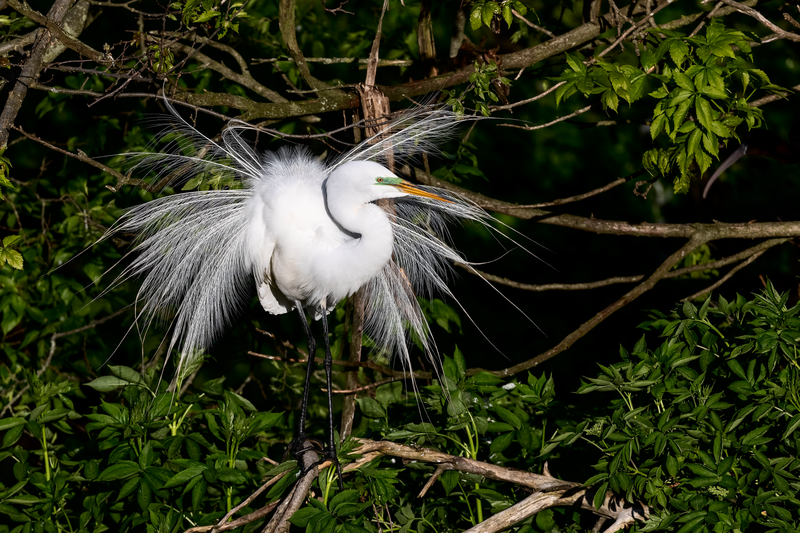
The great egret is an impressive bird that is widely distributed throughout the world. It is also known as the common egret, large egret, great white egret, or great white heron.
This bird has four distinct subspecies, which are found in Asia, Africa, the Americas, and southern Europe. In recent times, the great egret has also been spotted in more northern areas of Europe, showing that its range is expanding.
This bird is most easily identified by its white feathers, long neck, and black legs and bill. Its wingspan can reach up to five feet wide, allowing it to soar gracefully through the air.
The great egret is a large bird, standing up to three and a half feet tall. The great egret typically inhabits shallow wetlands and grasslands, but it can also be found in woodlands, estuaries, and lagoons.
It is an opportunistic feeder, eating fish, amphibians, reptiles, and crustaceans. It often uses its long legs to wade into the water in search of food. The great egret is a beautiful bird and an important part of many ecosystems.
It is an impressive sight to see this bird in its natural habitat, and its increasing range across Europe is a cause for celebration.
| Kingdom | Animalia |
| Phylum | Chordata |
| Class | Aves |
| Order | Pelecaniformes |
| Family | Ardeidae |
| Genus | Ardea |
| Species | A. alba |
11. Wilson’s Warbler
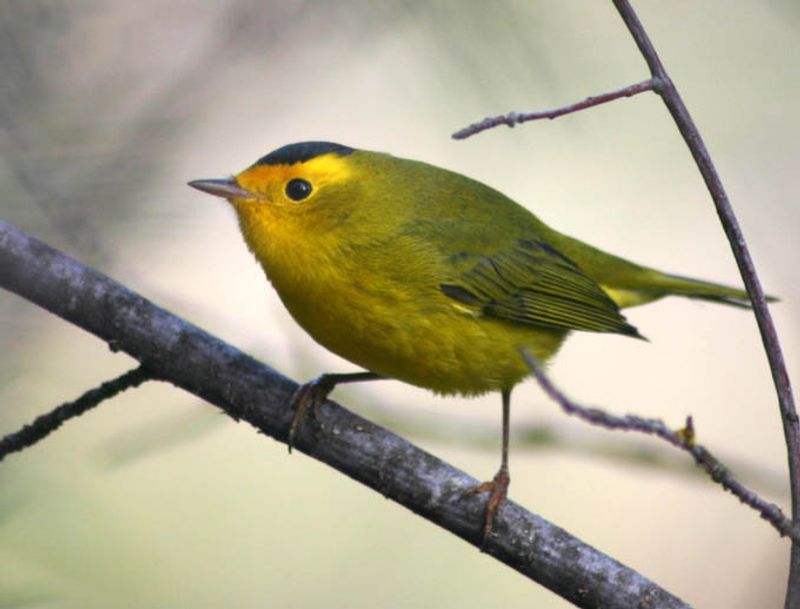
Wilson’s warbler is a small, colorful bird found in the New World. It has an overall greenish coloration on its back, and bright yellow on its underside. Its wings are rounded and the tail is long and slim.
The males often have a distinctive black crown patch, although this may vary depending on the subspecies. The female of the species may not have this crown patch at all, or it may be reduced in size.
The Wilson’s warbler is a beautiful bird and a welcome sight in many parts of the Americas.
| Kingdom | Animalia |
| Phylum | Chordata |
| Class | Aves |
| Order | Passeriformes |
| Family | Parulidae |
| Genus | Cardellina |
| Species | C. pusilla |
12. Yellow-Crowned Night Heron
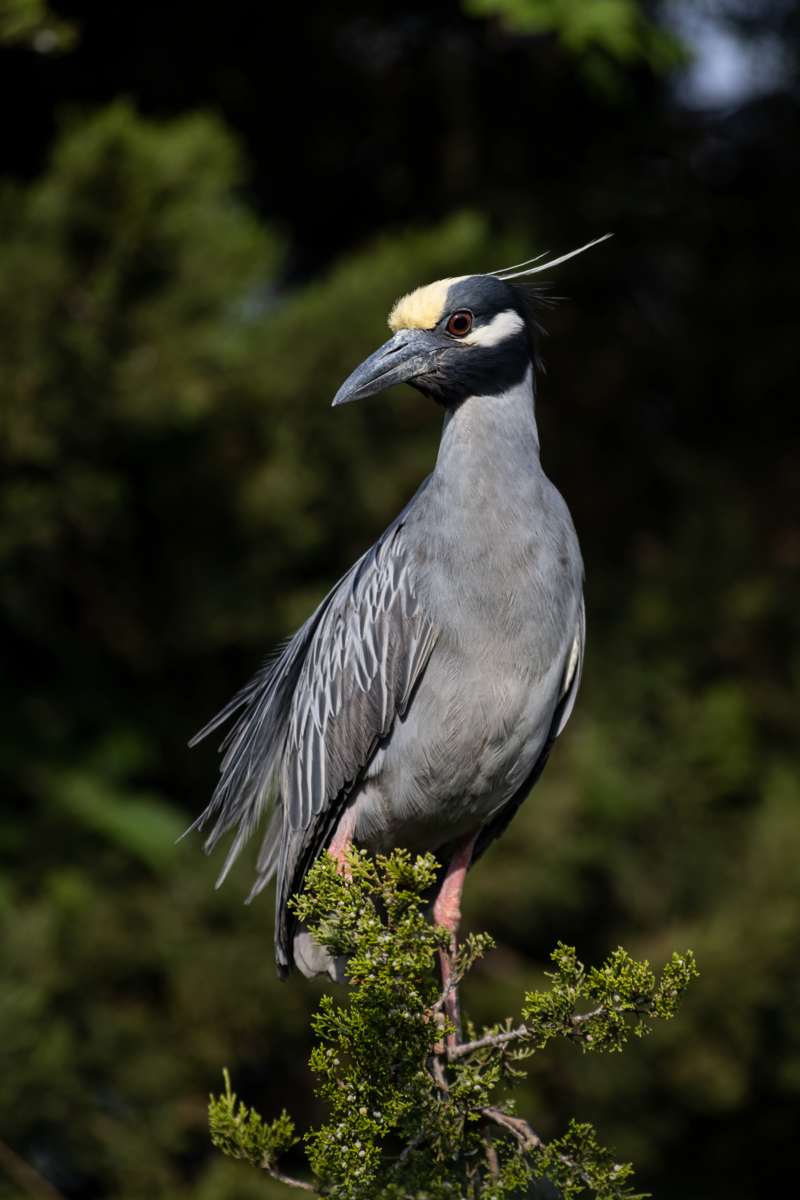
The yellow-crowned night heron is one of two species of night heron in the genus Nyctanassa. It is only found in the Americas, while the black-crowned night heron is found worldwide.
This species of heron is known as the bihoreau violacé in French and the pedrete corona Clara in Spanish. The yellow-crowned night heron is a small heron that lives in wetlands and marshes. It has a distinct yellow crown and long legs, which makes it easily recognizable.
It has a grey-brown body with a white neck and chest. Its size ranges from 17 to 20 inches and it weighs between 8 and 16 ounces. The yellow-crowned night heron is mostly nocturnal, which is why it is also known as the night heron.
It feeds mostly on small fish, crustaceans, and frogs.
During the day, it can be seen perched on trees or on the ground, waiting for prey. The yellow-crowned night heron is an important part of the food web in the Americas, and it plays an important role in the health of water ecosystems.
It is also an important part of the culture of many indigenous communities in the Americas.
| Kingdom | Animalia |
| Phylum | Chordata |
| Class | Aves |
| Order | Pelecaniformes |
| Family | Ardeidae |
| Genus | Nyctanassa |
| Species | N. violacea |
13. Bonaparte’s Gull
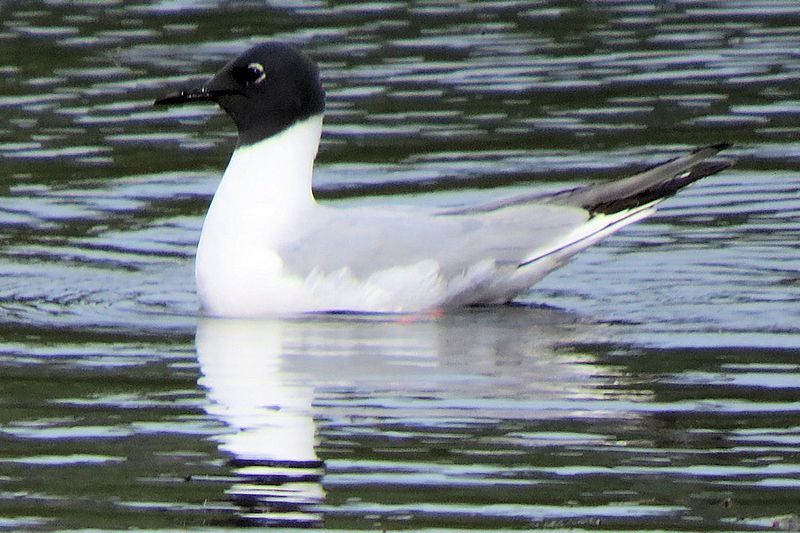
Bonaparte’s gull is a relatively small bird that is part of the Laridae family and is mainly found in northern North America. It is between 28 and 38 cm in length, and its main color is white with grey upper parts.
During the breeding season, the bird develops a slaty-black hood. It is important to note that both the male and female Bonaparte’s gulls look the same, and there is no way to differentiate between them.
The Bonaparte’s gull has several unique characteristics that distinguish it from other species of gulls. Its small size is one of the most distinguishing traits, as it is much smaller than most other gulls.
Furthermore, during the breeding season, it has a slaty-black hood, which is not seen in other species of gulls. The Bonaparte’s gull is an important species of bird that plays a vital role in the ecosystem of northern North America.
As a top-level predator, it helps to keep the population of fish and other sea creatures in check. Additionally, its presence helps to keep the waters clean by feeding on carrion and other debris.
Overall, the Bonaparte’s gull is an important species of bird that plays a vital role in the ecosystem of northern North America. Its small size and distinct coloring make it a unique species that can be easily identified.
Furthermore, its presence helps to maintain the balance of the local ecosystem, making it an important species to conserve.
| Kingdom | Animalia |
| Phylum | Chordata |
| Class | Aves |
| Order | Charadriiformes |
| Family | Laridae |
| Genus | Chroicocephalus |
| Species | C. philadelphia |
14. Greater Yellowlegs
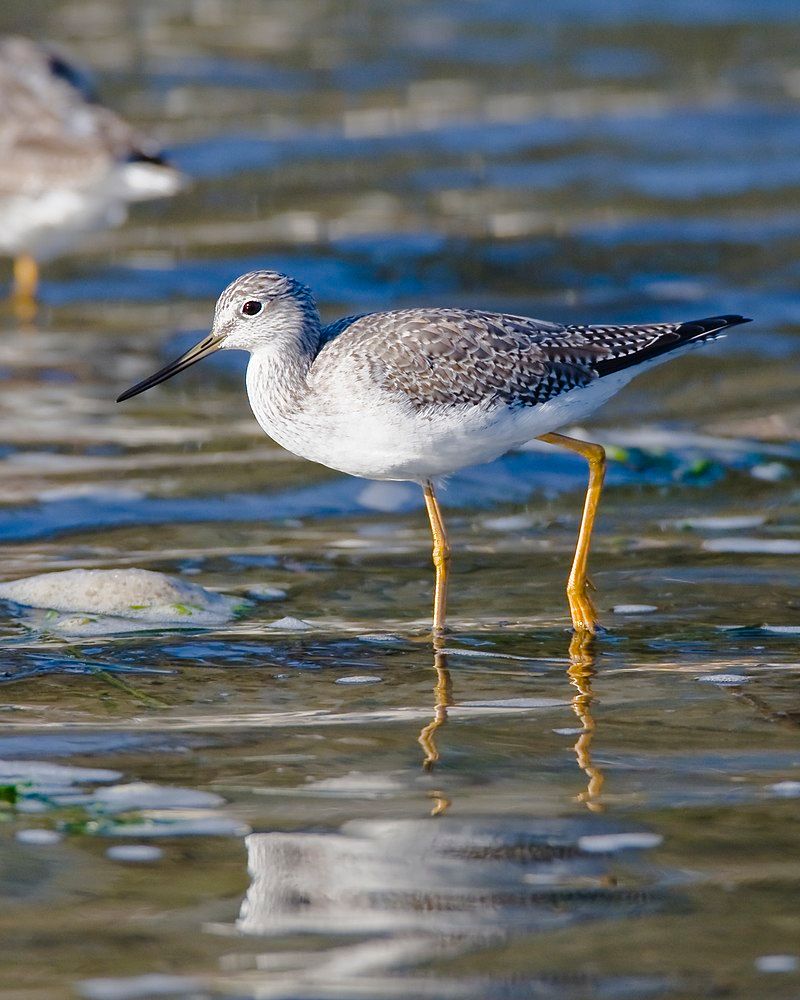
The greater yellowlegs is a species of shorebird belonging to the family Scolopacidae. It is a large species of bird, and its range extends from Central Canada and southern Alaska in the northern hemisphere, all the way to South America in the southern hemisphere.
During the summer breeding season, the greater yellowlegs can be found in their breeding grounds in Canada and Alaska. During the winter season, it migrates south and can be found in southern North America, Central America, the West Indies, and South America.
The greater yellowlegs is primarily a solitary species, but can sometimes be seen in small flocks. It feeds mainly on insects, spiders, crustaceans, and small fish.
To catch its prey, it uses a technique called ‘dipping’, where it plunges its bill into the water and catches its prey. The greater yellowlegs is a long-distance migrant, covering vast distances during its seasonal migrations.
In the summer, it can be heard making its distinctive ‘tew’ call, which it uses to communicate with other birds. It nests in shallow depressions on the ground, usually near wetlands, and lays a clutch of three to four eggs.
Both parents take turns incubating the eggs and raising the young. The greater yellowlegs is an important species in their habitats, helping to keep insect populations in check.
It is also an important species for birdwatchers, providing them with the opportunity to observe a large shorebird in its natural environment.
| Kingdom | Animalia |
| Phylum | Chordata |
| Class | Aves |
| Order | Charadriiformes |
| Family | Scolopacidae |
| Genus | Tringa |
| Species | T. melanoleuca |
15. Spotted Sandpiper
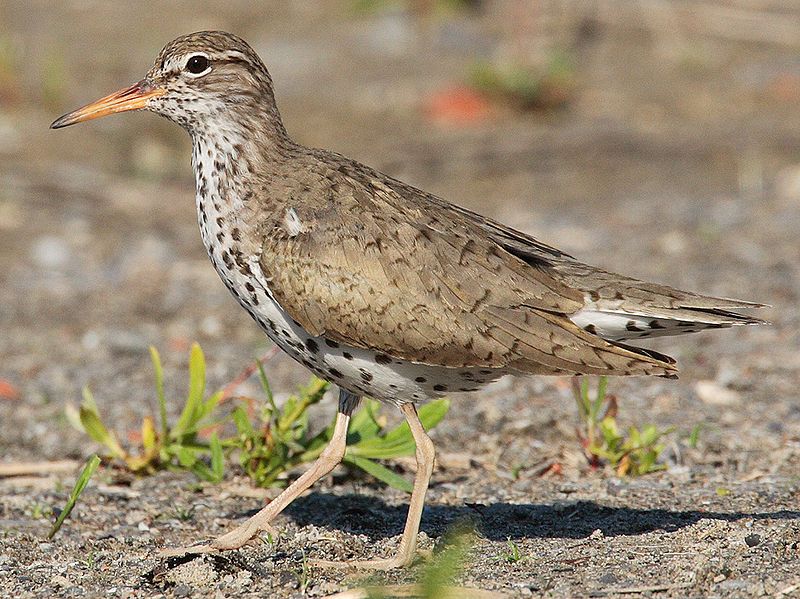
The spotted sandpiper is a small shorebird that is part of the genus Actitis. This genus also includes the common sandpiper, and the two species have a geographic overlap – meaning they are found in overlapping areas.
As a result, it is not uncommon for a bird from one species to join a breeding group of the other species. When this happens, hybridization may occur, resulting in offspring that have characteristics of both species.
Hybridization is an important part of species evolution, and this occurrence of interspecies breeding helps to ensure the survival of both species.
| Kingdom | Animalia |
| Phylum | Chordata |
| Class | Aves |
| Order | Charadriiformes |
| Family | Scolopacidae |
| Genus | Actitis |
| Species | A. macularius |
16. Clark’s Grebe
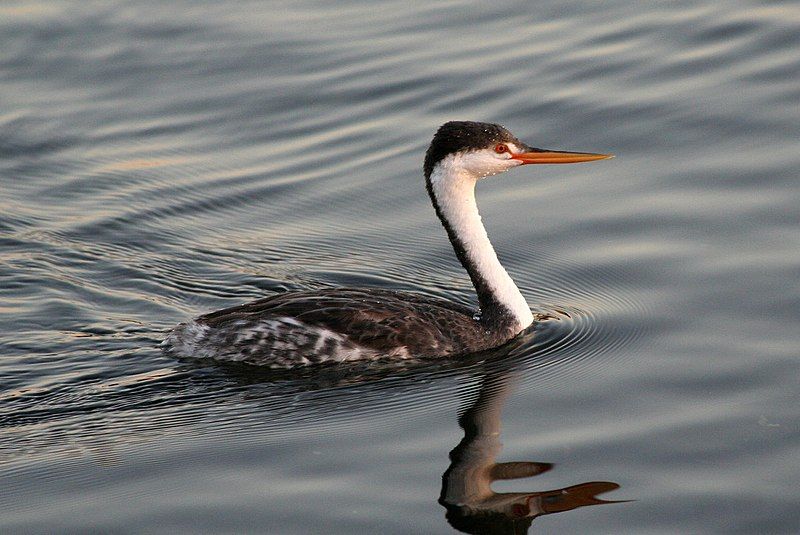
The Clark’s Grebe is a species of waterbird that is native to North America. It belongs to the family of grebes, which are small, aquatic birds that are known for their excellent swimming and diving abilities.
Until the 1980s, the Clark’s Grebe was believed to be merely a pale morph of the Western Grebe, as the two species had similar sizes, habitats, and behaviors.
However, it was later discovered that there were some birds that appeared to be a mixture of the two species, which gave further evidence that Clark’s Grebe was an entirely separate species.
These birds, referred to as “intermediates”, had characteristics of both the Clark’s Grebe and the Western Grebe, making them unique from either species.
| Kingdom | Animalia |
| Phylum | Chordata |
| Class | Aves |
| Order | Podicipediformes |
| Family | Podicipedidae |
| Genus | Aechmophorus |
| Species | A. clarkii |
17. Black-Crowned Night Heron
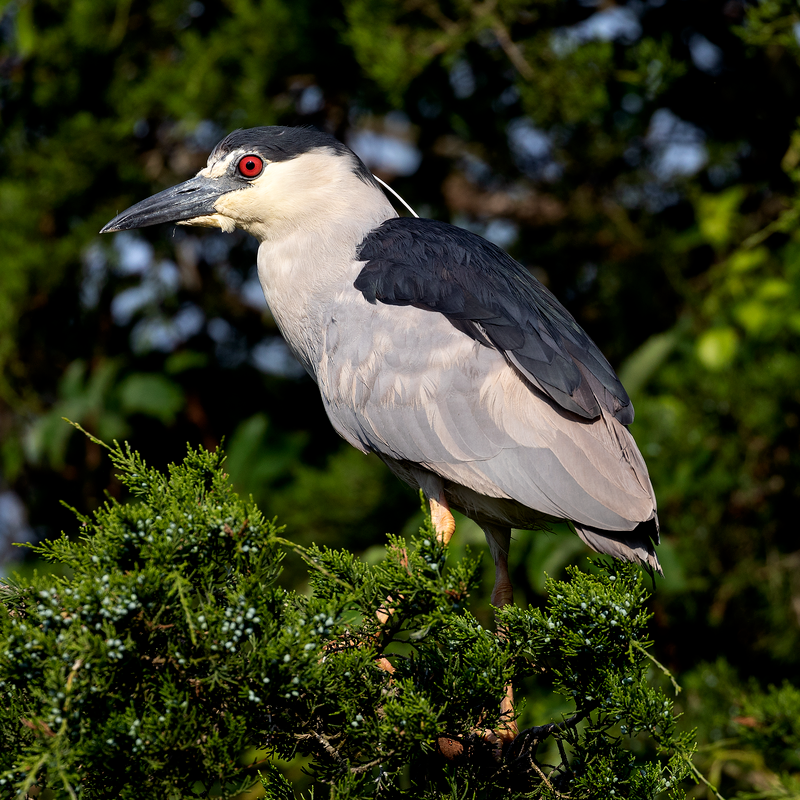
The black-crowned night heron is a species of heron found in various parts of the world. It is known by a variety of names, including black-capped night-heron and night-heron, the latter being the most commonly used name in Eurasia.
It is a medium-sized bird, with a length between 26 and 39 inches and a wingspan of up to 56 inches.
It is mainly gray in color, with white patches on its neck and wings, and a black crown on its head. The black-crowned night heron is widely distributed, with its range stretching from parts of Europe, Asia, and North and South America.
It prefers to live in habitats such as marshes, swamps, and other wetlands. It is an opportunistic feeder, eating a variety of small animals, such as frogs, fish, and insects.
It is mostly nocturnal, and can often be seen perching in trees or on the ground near water at dusk. The black-crowned night heron is an important species for wetland conservation. It is a keystone species, as its presence is essential to the health of its habitat.
The species is also important ecologically, as it plays a vital role in the food chain of its environment. Unfortunately, the black-crowned night heron is increasingly threatened by habitat loss and degradation.
Conservation efforts to protect this species and its habitat are therefore essential.
| Kingdom | Animalia |
| Phylum | Chordata |
| Class | Aves |
| Order | Pelecaniformes |
| Family | Ardeidae |
| Genus | Nycticorax |
| Species | N. nycticorax |
18. American Redstart
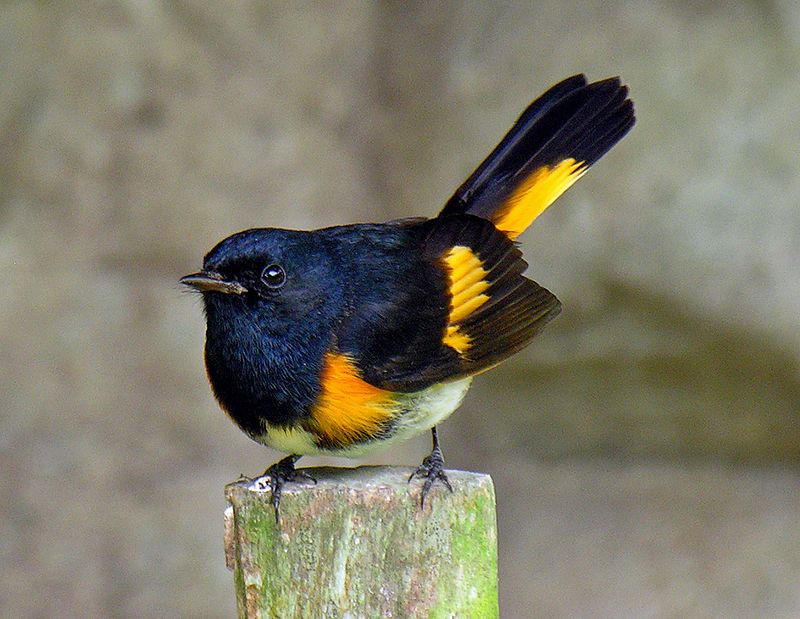
The American Redstart is a type of songbird that belongs to the New World Warbler family. It is a small bird, usually with black, orange, and white plumage. It is not related to the Old World redstart, which belongs to a different family of birds.
The American redstart is found in the eastern and central parts of North America, while the Old World redstart is found in Europe and Asia. The American Redstart is known for its unique behavior of flicking its wings and tail while singing.
This behavior is thought to attract a mate or to ward off predators. In addition to its unique behavior, the American Redstart is also known for its distinctive song. Its song is a fast trill that can be heard over long distances.
The American redstart is an important part of the North American ecosystem. It plays a role in controlling insect populations, and it provides food for predators. It is also an important source of song and beauty in the natural world.
In conclusion, the American Redstart is a unique type of songbird that belongs to the New World Warbler family. While it is not related to the Old World redstart, it is an important part of the North American ecosystem.
Its unique behavior and song make it a beautiful and interesting bird to observe.
| Kingdom | Animalia |
| Phylum | Chordata |
| Class | Aves |
| Order | Passeriformes |
| Family | Parulidae |
| Genus | Setophaga |
| Species | S. ruticilla |
19. American White Pelican
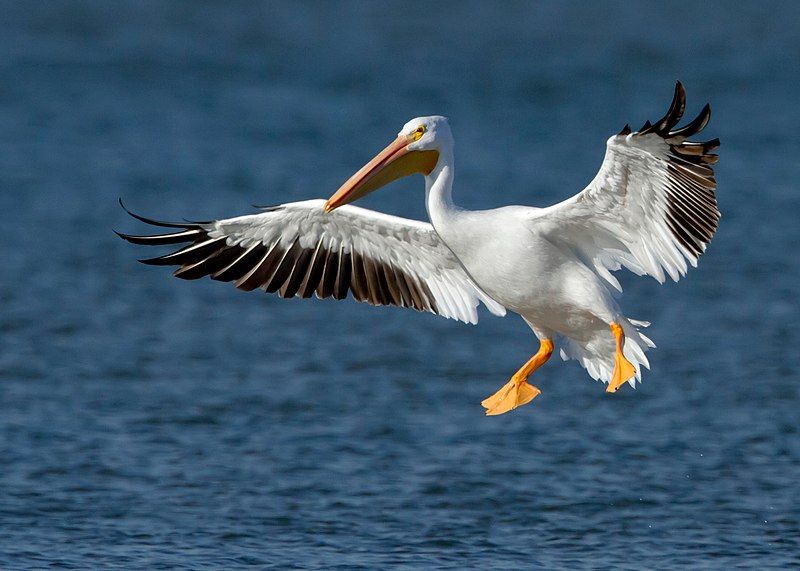
The American white pelican is an impressive aquatic bird from the order Pelecaniformes. It is well-known for its size, with an average wingspan of up to 10 feet, and its soaring abilities. It is native to North America, breeding in inland areas during the summer months.
When the cold weather arrives, they migrate south towards the coasts, with some making it as far as Costa Rica. Pelicans live in large groups and have a unique social structure.
They feed in the water, using their unique pouched beak to scoop up fish, crustaceans, and other small creatures. They often hunt in large groups, working together to herd their prey into shallow waters.
This impressive bird is an important part of the North American ecosystem, and its migratory patterns are a reminder of its impressive adaptability.
| Kingdom | Animalia |
| Phylum | Chordata |
| Class | Aves |
| Order | Pelecaniformes |
| Family | Pelecanidae |
| Genus | Pelecanus |
| Species | P. erythrorhynchos |
20. Anna’s Hummingbird
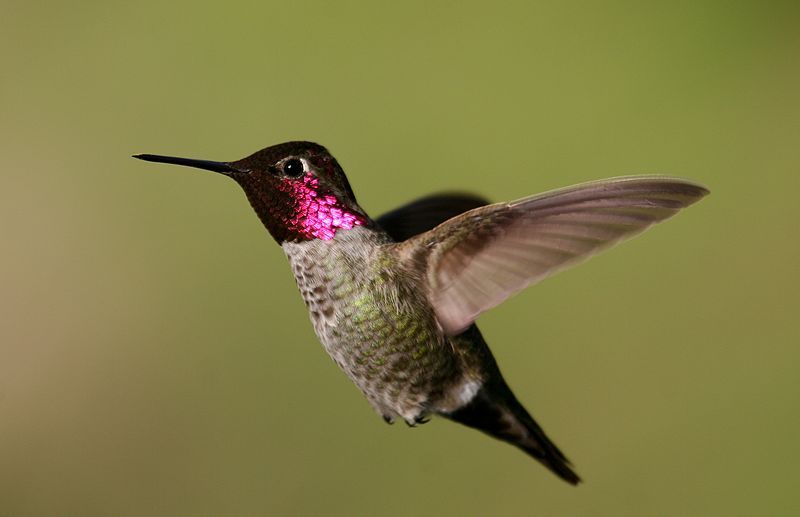
Anna’s hummingbird is a species of bird that belongs to the family Trochilidae. It is native to the western coast of North America and is medium-sized in comparison to other hummingbirds.
The species was named after Anna Masséna, the Duchess of Rivoli. In the early twentieth century, Anna’s hummingbirds were only found breeding in the northern parts of Baja California and in Southern California.
This was due to their preference of living in areas with warmer climates and plenty of natural resources that they need for survival such as nectar and insects.
As the climate in these regions is more suitable for them, the hummingbirds were able to thrive and reproduce successfully. Today, Anna’s hummingbirds have a much wider range, spanning from British Columbia to northern Mexico.
This is due to the fact that the species has adapted to different climates and surrounding habitats, allowing them to survive in areas outside of their original range. As a result, the species is now more widespread and can be found in many different places around the world.
| Kingdom | Animalia |
| Phylum | Chordata |
| Class | Aves |
| Clade | Strisores |
| Order | Apodiformes |
| Family | Trochilidae |
| Genus | Calypte |
| Species | C. anna |
21. Belted Kingfisher
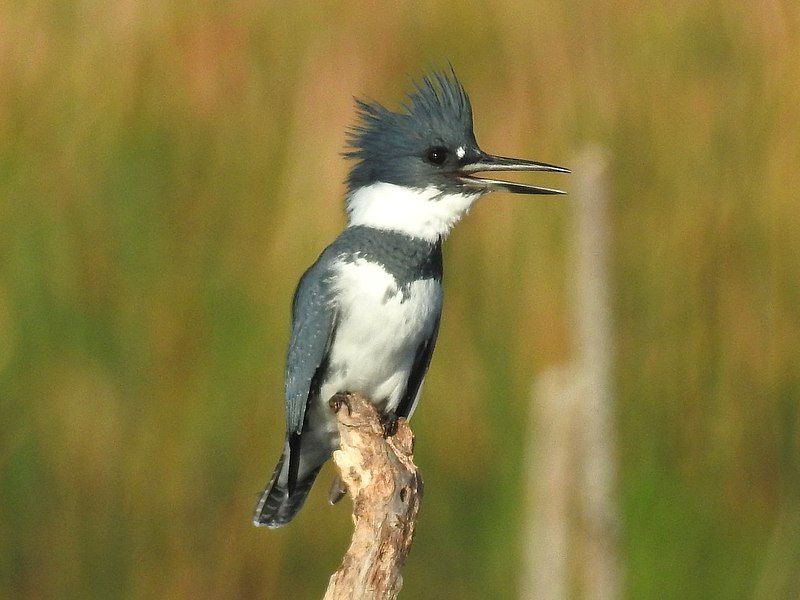
The belted kingfisher is a large bird that is native to North America. It belongs to the family of birds known as kingfishers, which have been traditionally placed in one family, Alcedinidae.
However, recent research has suggested that this single family should be divided into three distinct subfamilies. This is based on the differences in size, habitat, and behavior among various kingfisher species.
For example, the belted kingfisher is the largest kingfisher species in North America, and it prefers to inhabit shorelines and rivers. In contrast, the smaller American pygmy kingfisher prefers to live in tropical forests and wetlands.
Additionally, the behavior of the two species is quite different, with the belted kingfisher being more solitary and the American pygmy kingfisher being more social.
By recognizing these differences among kingfisher species, researchers have concluded that there are three distinct subfamilies of kingfishers: Cerylidae, which includes the belted kingfisher and other large kingfishers; Alcedinidae, which includes the smaller kingfishers such as the American pygmy kingfisher; and Halcyonidae, which includes the more tropical kingfishers.
This new classification allows us to better understand the various species of kingfishers and appreciate the diversity within this family of birds.
| Kingdom | Animalia |
| Phylum | Chordata |
| Class | Aves |
| Order | Coraciiformes |
| Family | Alcedinidae |
| Genus | Megaceryle |
| Species | M. alcyon |
22. Forster’s Tern
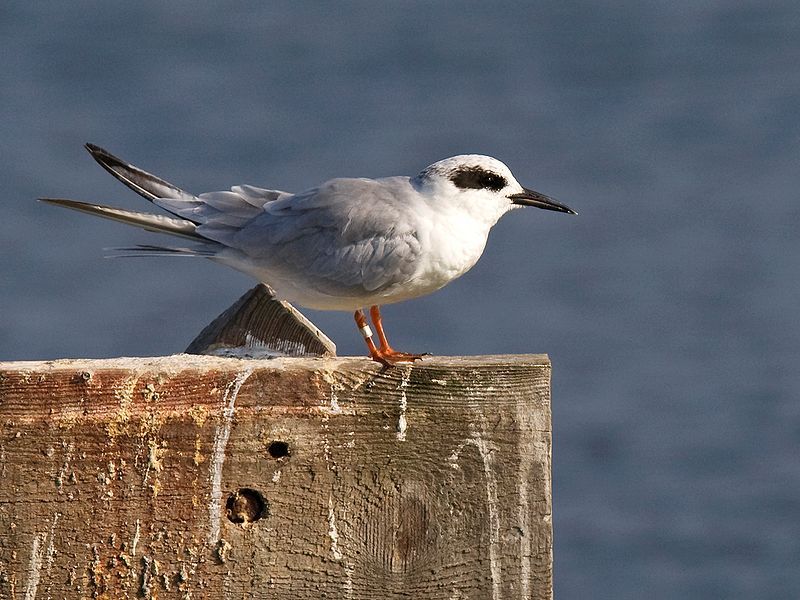
Forster’s tern is a seabird belonging to the family of Laridae. It is named after the German naturalist Johann Reinhold Forster, and its genus name Sterna is derived from an Old English word meaning “tern”.
This species of tern breeds inland in North America, during the summer months. During the winter, it migrates south to the Caribbean and the northern part of Central America. This species of tern is known for its distinctive black-tipped wings and its graceful, arching flight.
It typically feeds on small fish and other aquatic creatures, which it catches by hovering and then plunging into the water. This species of tern is considered to be of least concern in terms of conservation due to its wide range and relatively stable population.
| Kingdom | Animalia |
| Phylum | Chordata |
| Class | Aves |
| Order | Charadriiformes |
| Family | Laridae |
| Genus | Sterna |
| Species | S. forsteri |
Conclusion
Goleta is home to a diverse array of birds. From the iconic California Condor to the ubiquitous American Robin, Goleta’s avian population is a testament to the vibrant and diverse ecosystem of the area.
In addition to providing a stunning display of color and song, these birds play a vital role in the local ecology, helping to control insect populations and pollinate plants. As such, it is important to continue to foster an environment in which birds can thrive.